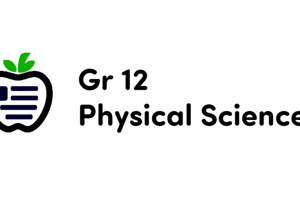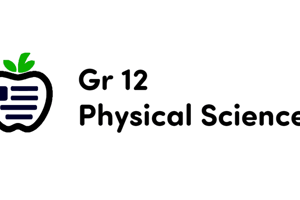Podcast
Questions and Answers
What causes the temperature difference between summer and winter in Canada?
What causes the temperature difference between summer and winter in Canada?
The temperature difference is caused by the angle of the Earth on its axis, which affects the concentration of solar radiation.
What did Isaac Newton's law of Universal Gravitation explain about planetary orbits?
What did Isaac Newton's law of Universal Gravitation explain about planetary orbits?
It explained that there is a gravitational pull between objects, keeping planets in elliptical orbits around the Sun.
What is the difference between the heliocentric and geocentric models?
What is the difference between the heliocentric and geocentric models?
The heliocentric model places the Sun at the center of the universe, while the geocentric model places Earth at the center.
How do planets maintain stable orbits around the Sun?
How do planets maintain stable orbits around the Sun?
What happens to the azimuth and altitude readings of celestial objects?
What happens to the azimuth and altitude readings of celestial objects?
How does a spectroscope help identify elements in the Sun's atmosphere?
How does a spectroscope help identify elements in the Sun's atmosphere?
What does it mean if a star's light is 'red shifted'?
What does it mean if a star's light is 'red shifted'?
What would the spectrum of the moon look like?
What would the spectrum of the moon look like?
What conclusion can astronomers draw about the composition of stars producing specific spectral lines?
What conclusion can astronomers draw about the composition of stars producing specific spectral lines?
What advancements in telescope technology were inspired by Karl Jansky's discovery?
What advancements in telescope technology were inspired by Karl Jansky's discovery?
What are the main differences between refracting and reflecting telescopes?
What are the main differences between refracting and reflecting telescopes?
How did Galileo's improvements to the telescope change the study of celestial bodies?
How did Galileo's improvements to the telescope change the study of celestial bodies?
What does the term 'resolving power' refer to in the context of telescopes?
What does the term 'resolving power' refer to in the context of telescopes?
What conclusions did Galileo draw from observing Jupiter and its moons?
What conclusions did Galileo draw from observing Jupiter and its moons?
Why are larger refracting telescopes typically limited by the weight of their lenses?
Why are larger refracting telescopes typically limited by the weight of their lenses?
Flashcards are hidden until you start studying
Study Notes
Temperature and Seasons
- Temperature variance between summer and winter results from Earth's axial tilt.
- Sun’s radiation is concentrated in summer, leading to higher temperatures in Canada compared to winter where energy is diluted over a larger area.
Universal Gravitation
- Johannes Kepler characterized planetary orbits as elliptical, with the Sun at one focus, meaning Earth varies in distance from the Sun.
- Isaac Newton formulated the law of Universal Gravitation, explaining elliptical orbits as a result of gravitational pull balancing the linear motion of planets.
Celestial Mechanics and Reference Frames
- A frame of reference is a coordinate system for measuring positions and motions.
- Ancient civilizations believed Earth was central to the universe due to observational limitations and philosophical beliefs.
Astronomical Tools
- An astrolabe is an ancient instrument used for solving problems related to time and the position of celestial bodies.
- Azimuth measures the angle clockwise from north, while altitude is measured as the angle above the horizon.
Astronomical Measurements
- Azimuth readings range from 0° to 360°; altitude readings range from 0° to 90°.
- Heliocentric model proposes that the Sun is at the center of the universe, contrasting with the geocentric model which has Earth at the center.
Seasonal Changes
- Winter coldness is due to the angle of sunlight, not distance from the Sun; energy from the Sun’s rays is more concentrated in summer.
- Equinox refers to when day and night duration is equal, occurring during spring and fall.
Stellar Dynamics and Observations
- Planets maintain stable orbits through the gravitational force exerted by the Sun, counteracting their inertial tendency to move in a straight line.
- The Doppler effect can be applied to astronomy to determine the movement of stars based on changes in light frequency; red-shifting indicates a star is moving away while blue-shifting means it is moving closer.
Telescopes and Light Waves
- Radio telescopes can study space without weather interference and detect wavelengths invisible to optical telescopes, providing essential information about neutral hydrogen in the Milky Way.
- Electromagnetic energy travels at the speed of light (300,000 km/s) and varies in wavelengths and frequencies; smaller wavelengths yield better resolving power.
Space Exploration Technologies
- Rockets require a combustible mixture that expels exhaust, achieving the necessary exhaust velocity of 28,000 km/h to reach orbit.
- Gravitational assist utilizes planetary gravity to expedite spacecraft, allowing for further exploration of the solar system.
Astronaut Life and Challenges
- Space presents severe hazards including lack of oxygen, extreme temperatures, and exposure to radiation.
- Extended missions pose psychological challenges due to confined living and can result in physical changes due to microgravity, affecting fluid distribution, muscle mass, and bone density.
Health in Microgravity
- Astronauts experience space sickness, akin to motion sickness, due to microgravity effects; adaptations may include medication.
- Regular exercise is necessary to mitigate muscle atrophy and maintain physical health in a microgravity environment.
Telescopes
- A telescope magnifies distant objects using an objective lens (front) and an ocular lens (eyepiece).
- Refracting telescopes use lenses, while reflecting telescopes use mirrors; refractors provide superior images but are limited in size due to lens weight.
- Galileo Galilei enhanced the telescope's design and made significant astronomical observations, challenging existing theories.
Galileo's Observations
- Revealed imperfections on the Moon's surface, indicating its physical characteristics.
- Discovered sunspots that moved over a month, suggesting solar dynamics.
- Observed four moons orbiting Jupiter, demonstrating that not all celestial bodies revolve around Earth.
- Noted that planets appear disk-shaped while stars remain point-like under magnification.
Advances in Astronomy
- Increased resolving power is essential for telescopes to produce finer details.
- Isaac Newton demonstrated that white light can be separated into a spectrum, revealing color composition.
- Joseph von Fraunhofer identified spectral lines in the Sun's spectrum, marking the foundation of spectroscopy.
Spectroscopy
- Each chemical element emits a unique pattern of spectral lines, allowing elements to be identified through analysis.
- Diffraction gratings, consisting of closely spaced slits, produce superior spectral detail compared to prisms.
Distance Measurement in Astronomy
- Parallax, the apparent shift of nearby stars against distant backgrounds, is crucial for measuring stellar distances.
- The Hipparcos satellite enhanced parallax measurement, mapping 120,000 stars within 1600 light-years from Earth.
- Astronomical distances are measured using astronomical units (AU) and light-years; 1 AU equals the distance from Earth to the Sun.
Rockets and Space Travel
- Essential components of a rocket include machinery, fuel (e.g., liquid hydrogen), and payload (crew, supplies).
- Achieving an exhaust velocity of 28,000 km/h is necessary for space travel. Staged rockets improve fuel efficiency and range.
- Gravitational assist techniques allow spacecraft to gain speed using a planet’s gravity.
Satellites and Probes
- Artificial satellites serve various functions, such as communication and observation, powered typically by solar panels.
- Space probes gather data from space but are unmanned, contributing to scientific knowledge without human presence.
Living in Space
- Environmental hazards in space include lack of oxygen, extreme temperatures, and cosmic radiation.
- Psychological challenges arise from confined living conditions during long missions.
- Microgravity impacts human physiology, causing fluid shifts, bone density loss, muscle weakening, and altered depth perception.
Studying That Suits You
Use AI to generate personalized quizzes and flashcards to suit your learning preferences.




